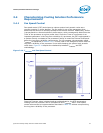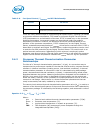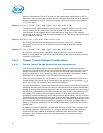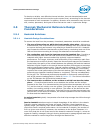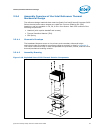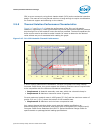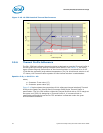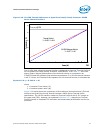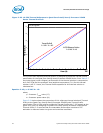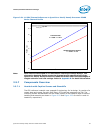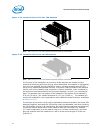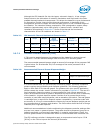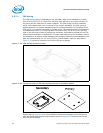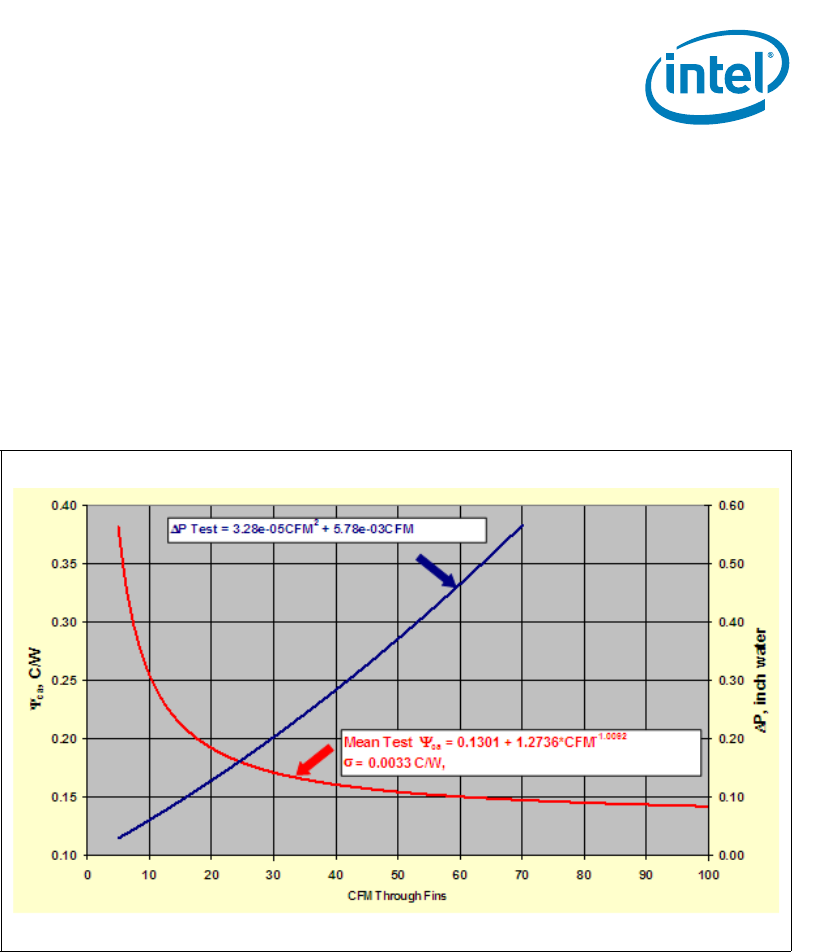
Quad-Core Intel® Xeon® Processor 5400 Series TMDG 41
Thermal/Mechanical Reference Design
CEK, are now commonly using direct chassis attach (DCA) as the mechanical retention
design. The mass of the new thermal solutions is large enough to require consideration
for structural support and stiffening on the chassis.
2.5.5 Thermal Solution Performance Characteristics
Figure 2-17 and Figure 2-18 show the performance of the 2U+ and 1U passive
heatsinks, respectively. These figures show the thermal performance and the pressure
drop through fins of the heatsink versus the airflow provided. The best-fit equations for
these curves are also provided to make it easier for users to determine the desired
value without any error associated with reading the graph.
If other custom heatsinks are intended for use with the Quad-Core Intel® Xeon®
Processor 5400 Series, they must support the following interface control requirements
to be compatible with the reference mechanical components:
• Requirement 1: Heatsink assembly must stay within the volumetric keep-in.
• Requirement 2: Maximum mass and center of gravity.
Current maximum heatsink mass is 1000 grams [2.2 lbs] and the maximum center of
gravity 3.81 cm [1.5 in.] above the bottom of the heatsink base.
• Requirement 3: Maximum and minimum compressive load.
Any custom thermal solution design must meet the loading specification as
documented within this document, and should refer to the Quad-Core Intel® Xeon®
Processor 5400 Series Datasheet and LGA771 Socket Mechanical Design Guide for
specific details on package/socket loading specifications.
Figure 2-17. 2U+ CEK Heatsink Thermal Performance



